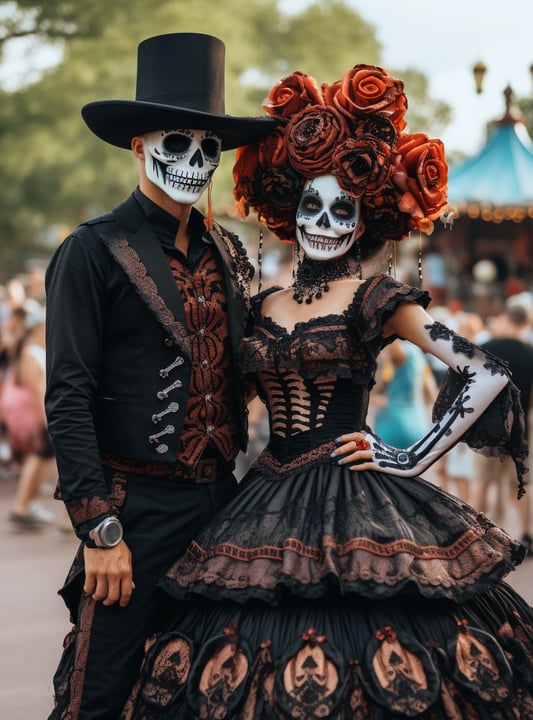DAY OF THE DEAD FASHION: A HISTORICAL ANALYSIS


The Evolution of Traditional Costume
How has the traditional costume changed over time?
The traditional costume for Dia de los Muertos has undergone several transformations throughout history. Initially, it consisted of simple garments worn by indigenous communities, reflecting the cultural heritage of Mexico. Eventually, foreign influences meshed with Mexican culture, and the traditional costume began to evolve, incorporating elements from Spanish colonizers and other cultures that were introduced to the area.
Influences from Fashion Trends
How have fashion trends influenced the traditional costume?
Modern fashion trends have undoubtedly also had a significant impact on the evolution of the traditional costume for Dia de los Muertos. The colorful and elaborate designs have come about from the influence of fashion trends with vibrant and colorful aesthetics. The use of detailed embroidery, lace, and sequins in the traditional costume demonstrates well the mix of traditional elements with modern fashion.
Regional Traditions and Their Influence on Costume Regional Variations
Does the traditional costume differ across different regions?
The traditional costume for Dia de los Muertos varies across different regions in Mexico, and each region has its own unique interpretation of the costume. For example, in the southern regions of Oaxaca and Chiapas, women wear intricately woven huipiles, or traditional blouses, adorned with vibrant embroidery, while men don charro suits symbolizing Mexican ranchers.
The traditional costume is packed with symbolism. The use of skeletons and skulls in the costume represents the blending of life and death. The vibrant colors, like orange and purple, symbolize the celebration of life and rebirth. Additionally, the inclusion of marigolds, sugar skulls, and candles pays homage to the traditional offerings and decorations used during the celebration. According to Brittanica, the holiday is all about “...making peace with the eventuality of death by treating it familiarly, without fear and dread.” This would explain why the costumes are so cheerful and colorful, and the holiday itself is such an optimistic occasion.
Connection to the Celebration
How does the traditional costume connect to the Dia de los Muertos celebration?
The traditional costume plays a vital role in the Dia de los Muertos celebration, as it allows individuals to fully immerse themselves in the spirit of the event. By donning the costume, people honor their deceased loved ones and show solidarity with the larger community. It serves as a visual representation of the rich cultural heritage and traditions associated with Dia de los Muertos.
Embracing Cultural Roots
Why is it important to preserve and embrace the traditional costume?
Preserving and embracing the traditional costume for Dia de los Muertos is crucial to maintain the cultural identity and heritage of Mexico. By donning the costume and participating in the celebration, individuals pay respects to their ancestors and keep the tradition alive for future generations. It serves as a reminder of the importance of remembering and honoring those who came before.
In summation, the traditional costume for Dia de los Muertos is not merely a fashion statement, but a manifestation of history, culture, and tradition. Through its evolution, it has adapted to current fashion trends while all the while preserving its deep-rooted symbolism. The different variations of the costume display the diversity of Mexico's cultures. By embracing and continuing the traditional costume, individuals are able to connect with the Dia de los Muertos celebration and honor the memories of their loved ones in an extremely special way.
A Historical Fashion Analysis on Traditional Costume
Dia de los Muertos, or Day of the Dead, is a Mexican holiday celebrated every year to honor and remember loved ones who have passed on. As one of the most culturally significant events in Mexico, it encompasses many traditions, such as the use of traditional costumes. By studying these clothes, we can find their connection to current fashion trends, regional traditions, and the celebration itself.
